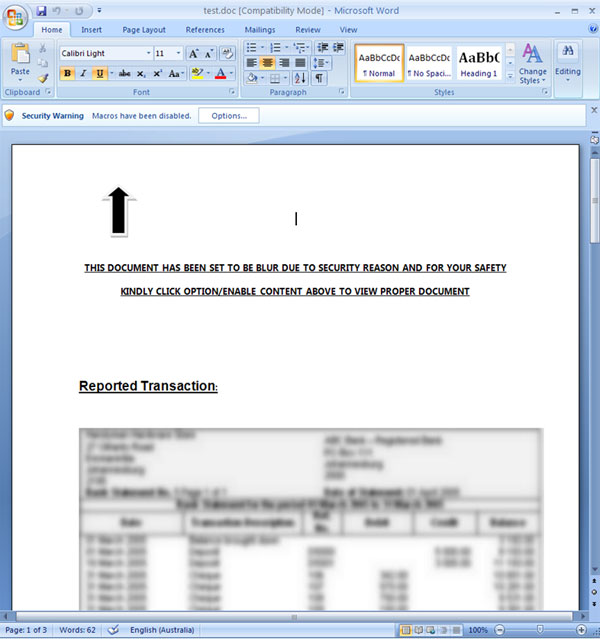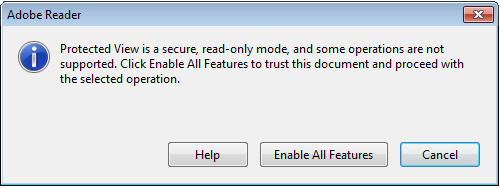Posted by Virus Bulletin on Nov 7, 2014
Users taught that having to enable enhanced security features is no big deal.
When I joined Virus Bulletin almost eight years ago, macro viruses were already a thing of the past, like porn diallers or viruses that did funny things to the characters on your screen: threats that were once a real problem, but that we didn't have to worry about any longer.
A few years ago, I even heard a malware researcher bemoan the fact that "kids these days" didn't even know how to analyse macro viruses. Of course, there was no reason why they should know: once Microsoft disabled the execution of VBA macros by default in all Office suites, macro malware disappeared from the scene.
Throughout the late 1990s and early 2000s, Virus Bulletin published many a macro virus analysis, for example Sarah Gordon's analysis of one of the first such viruses, Winword.Concept, in September 1995 (PDF), or Ian Whalley's look at the infamous Melissa virus in May 1999 (PDF).
Earlier this year, I wrote about an apparent return of macro viruses in targeted attacks. However, this concerned very small-scale attacks, usually against targets that had macros enabled.
Then things suddenly changed. In July, we published the paper "VBA is not dead!" from Sophos researcher Gabor Szappanos, in which he looked at the return of macro malware in recent months.

Rather than depend on macros executing automatically, these new pieces of macro malware used social engineering to entice the recipient of an Office document to enable macros, thus executing the malicious code, which usually resulted in downloading the actual payload.
Since then, things have only become worse. Two recent examples of malware that spread through macros are the 'DRIDEX' banking trojan, as reported by Trend Micro, and the 'TorrentLocker' ransomware that Fox-IT wrote about. These and several other recent examples used the same basic social engineering trick.
It is easy to bemoan 'stupid' users who create the problems themselves by enabling macros - and, of course, the more people who know not to do so, the better.

However, it is quite common these days to see 'advanced features' in software disabled by default for valid security reasons. Sometimes even the printing of a document downloaded from the Internet requires such features to be enabled. It is thus entirely understandable that many users don't think twice about enabling macros.
Posted on 07 November 2014 by Martijn Grooten